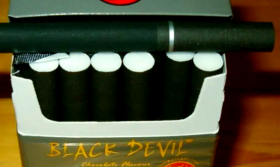Smoking Adversely Impacts Periodontal Tissue Regeneration: A Deep Dive into Mechanisms and Outcomes
Abstract
Periodontal disease is a pervasive global health issue, leading to the destruction of the supporting structures of the teeth, including the alveolar bone, periodontal ligament, and cementum. While contemporary periodontal therapy aims to regenerate these lost tissues, the success of such regenerative procedures is highly variable and influenced by numerous factors. Among these, smoking stands out as a significant, modifiable risk factor that profoundly impairs the quality and predictability of periodontal tissue regeneration. This article explores the multifaceted mechanisms through which smoking compromises healing and reduces the quality of regenerated periodontal tissues, drawing upon current molecular, cellular, and clinical evidence.
Introduction: The Goal of Regeneration and the Smoking Hurdle
Periodontal regeneration is a complex biological process involving the coordinated activities of various cell types, including periodontal ligament cells, osteoblasts, cementoblasts, and epithelial cells. The ultimate goal is the formation of new bone, cementum, and a functional periodontal ligament. Techniques such as guided tissue regeneration (GTR), bone grafting, and the application of growth factors and enamel matrix derivatives have been developed to facilitate this process. However, the presence of cigarette smoke and its numerous constituents—including nicotine, carbon monoxide, and hydrogen cyanide—creates a hostile environment that disrupts every stage of this delicate healing cascade, leading to inferior regenerative outcomes.
Mechanisms of Impairment: How Smoking Disrupts Healing
The detrimental effects of smoking on periodontal regeneration are mediated through a series of interconnected pathological mechanisms.
1. Vasoconstriction and Tissue Hypoxia
Nicotine is a potent vasoconstrictor, causing a significant reduction in blood flow to the periodontal microvasculature. This impaired perfusion has two major consequences. First, it deprives the healing wound of essential nutrients and oxygen, creating a state of tissue hypoxia. This environment is detrimental to the energy-intensive processes of cell proliferation and matrix synthesis required for regeneration. Second, reduced blood flow limits the delivery of immune cells to the site and the removal of waste products, further stagnating the healing process.
2. Dysregulation of Inflammatory and Immune Responses
A balanced and well-regulated inflammatory phase is crucial for initiating wound healing. Smoking disrupts this balance. It potentiates a prolonged and exaggerated inflammatory response by stimulating the release of pro-inflammatory cytokines, such as Tumor Necrosis Factor-alpha (TNF-α) and Interleukin-1 beta (IL-1β). Concurrently, smoking compromises the function of key immune cells; it inhibits neutrophil phagocytosis and reduces the oxidative burst, impairing bacterial clearance. It also adversely affects fibroblast function, the primary cell responsible for producing the collagen framework of the new periodontal ligament. This combination of heightened inflammation and suppressed defense creates an environment conducive to continued tissue breakdown rather than repair.
3. Cytotoxicity and Inhibition of Cell Function
Critical progenitor cells are directly harmed by tobacco smoke. Numerous in vitro studies have demonstrated that nicotine and other smoke components are cytotoxic to periodontal ligament fibroblasts, osteoblasts, and mesenchymal stem cells. Even at sub-toxic levels, these chemicals alter cell behavior. They inhibit cell attachment, proliferation, and migration to the wound site. Most critically, they downregulate the expression of genes and proteins essential for regeneration, including collagen type I, alkaline phosphatase, osteocalcin, and bone morphogenetic proteins (BMPs). This directly translates to reduced formation of bone and connective tissue matrix.
4. Alteration of the Oral Microbiome
Smoking induces shifts in the oral microbiome, selecting for a more pathogenic subgingival biofilm. Smokers tend to harbor higher levels of periodontal pathogens such as Porphyromonas gingivalis and Treponema denticola. This altered biofilm challenges the host's immune system throughout the healing period, increasing the risk of postoperative infection and compromising the integration and survival of regenerative materials and grafts.
Clinical Evidence: Observing the Outcomes
The biological mechanisms described above manifest clearly in clinical practice. Systematic reviews and meta-analyses consistently report that smokers have significantly worse outcomes following regenerative periodontal surgery compared to non-smokers. Key clinical differences include:
- Reduced Clinical Attachment Level (CAL) Gain: The primary measure of regenerative success is the gain in CAL, indicating the reformation of supporting tissue. Smokers consistently demonstrate less gain than non-smokers.
- Less Bone Fill: Radiographic and surgical re-entry evaluations show significantly less bone fill in defects treated in smokers.
- Increased Complication Rates: Smokers have a higher incidence of postoperative complications, including wound dehiscence (opening of the wound) and infection, which can lead to graft failure.
- Greater Recession: Regeneration in smokers is often accompanied by greater gingival recession, resulting in a less aesthetically pleasing outcome.
The negative impact is dose-dependent, with heavy smokers facing worse prognoses than light smokers, though any level of smoking is detrimental.
Conclusion and Implications for Clinical Practice
The evidence is unequivocal: smoking drastically reduces the quality of periodontal tissue regeneration. It creates a compromised physiological environment through vasoconstriction, immune dysregulation, cellular toxicity, and microbiological shifts, which collectively inhibit the body's innate capacity to heal and rebuild lost structures.
This has profound implications for dental professionals and patients alike. It necessitates a paradigm where smoking cessation becomes an integral, non-negotiable component of periodontal therapy. Prior to undertaking complex and costly regenerative procedures, patients must be thoroughly informed that their smoking habit is the single greatest modifiable factor determining the procedure's success. Structured smoking cessation programs, counseling, and medical collaboration should be offered to improve not only their periodontal prognosis but also their overall health. Ultimately, achieving high-quality periodontal regeneration is a partnership between clinician skill and a patient's commitment to creating a host environment conducive to healing.












